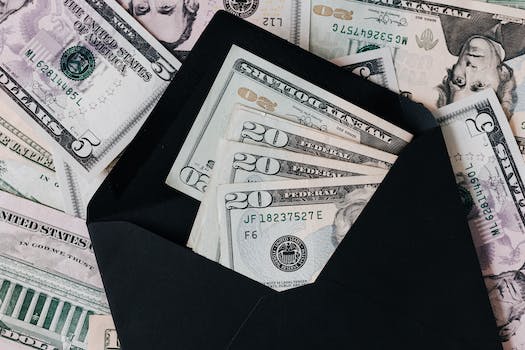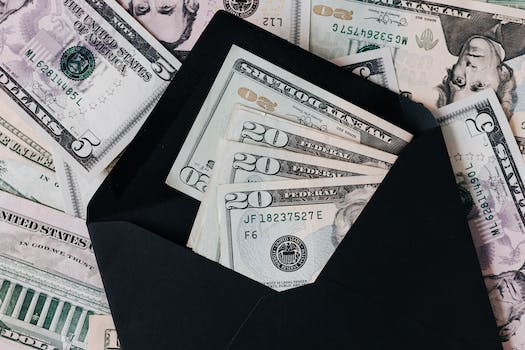How To Save Money In Restaurant Business
“Cut costs, not quality: Tips for saving money in the restaurant industry.”
Introduction
As a restaurant owner, saving money is crucial to the success of your business. With rising costs of ingredients, labor, and rent, it can be challenging to maintain profitability. However, there are several strategies you can implement to cut costs and increase your bottom line. In this article, we will discuss some effective ways to save money in the restaurant business.
Reduce Food Waste
Running a restaurant business can be a challenging task, especially when it comes to managing expenses. One of the biggest expenses in the restaurant industry is food waste. According to a report by the National Restaurant Association, restaurants in the United States generate around 11.4 million tons of food waste each year. This not only affects the bottom line of the business but also has a negative impact on the environment. In this article, we will discuss some tips on how to reduce food waste and save money in the restaurant business.
1. Plan Your Menu Carefully
One of the most effective ways to reduce food waste is to plan your menu carefully. Analyze your sales data and identify the dishes that are popular among your customers. Focus on those dishes and try to minimize the number of items on your menu. This will not only reduce food waste but also make it easier for your kitchen staff to manage inventory.
2. Use Fresh Ingredients
Using fresh ingredients is not only good for the quality of your food but also helps to reduce food waste. When you use fresh ingredients, you can prepare the exact amount of food that you need for the day. This will help you to avoid overproduction and reduce the amount of food that goes to waste.
3. Train Your Staff
Training your staff is crucial when it comes to reducing food waste. Make sure that your kitchen staff is trained to use the right portion sizes and to avoid overproduction. Train your servers to communicate with customers and to take orders accurately. This will help to minimize the number of dishes that are returned to the kitchen and reduce food waste.
4. Monitor Your Inventory
Monitoring your inventory is essential when it comes to reducing food waste. Keep track of the ingredients that you have in stock and use them before they expire. Make sure that your kitchen staff is aware of the inventory levels and that they use the oldest ingredients first. This will help to reduce the amount of food that goes to waste.
5. Donate Excess Food
Donating excess food is a great way to reduce food waste and give back to the community. Partner with local food banks or charities and donate the excess food that you have at the end of the day. This will not only help to reduce food waste but also create a positive image for your restaurant in the community.
6. Compost Food Waste
Composting food waste is another way to reduce the amount of waste that goes to landfills. Set up a composting system in your restaurant and compost the food waste that you generate. This will not only reduce your environmental impact but also save you money on waste disposal fees.
In conclusion, reducing food waste is essential for any restaurant business that wants to save money and reduce its environmental impact. By planning your menu carefully, using fresh ingredients, training your staff, monitoring your inventory, donating excess food, and composting food waste, you can significantly reduce the amount of food that goes to waste. These tips will not only help you to save money but also create a positive image for your restaurant in the community.
Negotiate with Suppliers

Running a restaurant business can be a challenging task, especially when it comes to managing finances. One of the most significant expenses in the restaurant industry is the cost of ingredients and supplies. However, there are ways to save money in this area, and one of them is by negotiating with suppliers.
Negotiating with suppliers can be a daunting task, but it is essential to remember that it is a win-win situation for both parties. As a restaurant owner, you want to save money, and suppliers want to keep your business. Here are some tips on how to negotiate with suppliers and save money in the restaurant business.
1. Research and Compare Prices
Before you start negotiating with suppliers, it is essential to research and compare prices from different suppliers. This will give you an idea of the market price for the ingredients and supplies you need. You can also use this information to negotiate better deals with your current suppliers.
2. Build a Relationship
Building a relationship with your suppliers is crucial in negotiating better deals. Suppliers are more likely to offer discounts and better prices to customers they have a good relationship with. Take the time to get to know your suppliers, and show them that you value their business.
3. Order in Bulk
Ordering in bulk is an effective way to save money in the restaurant business. Suppliers are more likely to offer discounts and better prices for larger orders. However, it is essential to ensure that you have enough storage space and that the ingredients and supplies have a long shelf life.
4. Negotiate Payment Terms
Negotiating payment terms with your suppliers can also help you save money. Suppliers may offer discounts for early payments or longer payment terms. However, it is essential to ensure that you can meet the payment terms and that it does not affect your cash flow.
5. Be Flexible
Being flexible in your negotiations can also help you save money. Suppliers may offer better prices for different brands or products. It is essential to be open to different options and to consider the long-term benefits of the deal.
6. Monitor Prices
It is essential to monitor prices regularly to ensure that you are getting the best deals from your suppliers. Prices may fluctuate due to market conditions, and it is essential to be aware of these changes. You can also use this information to negotiate better deals with your suppliers.
In conclusion, negotiating with suppliers is an effective way to save money in the restaurant business. It is essential to research and compare prices, build a relationship with your suppliers, order in bulk, negotiate payment terms, be flexible, and monitor prices regularly. By following these tips, you can save money on ingredients and supplies, which can help you increase your profits and grow your business. Remember, negotiating with suppliers is a win-win situation for both parties, and it is essential to maintain a good relationship with them.
Optimize Menu Pricing
Running a restaurant business can be a challenging task, especially when it comes to managing finances. One of the most significant expenses in the restaurant industry is food costs. However, there are several ways to save money in the restaurant business, and one of them is by optimizing menu pricing.
Menu pricing is a crucial aspect of any restaurant business. It is essential to set prices that are competitive, yet profitable. Here are some tips on how to optimize menu pricing and save money in the restaurant business.
1. Analyze Food Costs
The first step in optimizing menu pricing is to analyze food costs. It is essential to know the cost of each dish on the menu, including the cost of ingredients, labor, and overhead. This information will help you determine the profitability of each dish and make informed decisions about pricing.
To calculate food costs, you need to keep track of inventory and purchase orders. You can use software or spreadsheets to track food costs and make adjustments to menu pricing accordingly.
2. Use the Right Pricing Strategy
There are several pricing strategies that restaurants can use to optimize menu pricing. One of the most common strategies is the cost-plus pricing method. This method involves adding a markup to the cost of each dish to determine the selling price.
Another pricing strategy is value-based pricing. This method involves setting prices based on the perceived value of the dish to the customer. For example, a high-end restaurant may charge more for a dish that is made with premium ingredients.
3. Offer Specials and Promotions
Offering specials and promotions is an effective way to attract customers and increase sales. You can offer daily specials, happy hour discounts, or seasonal promotions to entice customers to try new dishes or visit your restaurant during off-peak hours.
When offering specials and promotions, it is essential to consider the cost of ingredients and labor. You want to offer discounts that are attractive to customers but still profitable for your business.
4. Monitor Sales and Adjust Pricing
Monitoring sales is crucial to optimizing menu pricing. You need to keep track of which dishes are selling well and which ones are not. This information will help you make informed decisions about menu pricing and adjust prices accordingly.
For example, if a dish is not selling well, you may need to lower the price or remove it from the menu altogether. On the other hand, if a dish is selling well, you may be able to increase the price slightly to increase profitability.
5. Control Portion Sizes
Controlling portion sizes is another way to optimize menu pricing. By reducing portion sizes, you can reduce food costs and increase profitability. However, it is essential to maintain the quality and presentation of the dish.
You can also offer different portion sizes for different prices. For example, you can offer a smaller portion size at a lower price for customers who want a lighter meal.
In conclusion, optimizing menu pricing is a crucial aspect of saving money in the restaurant business. By analyzing food costs, using the right pricing strategy, offering specials and promotions, monitoring sales, and controlling portion sizes, you can increase profitability and attract more customers to your restaurant. With these tips, you can take control of your restaurant’s finances and achieve long-term success.
Implement Energy-Saving Measures
Running a restaurant business can be a challenging task, especially when it comes to managing expenses. One of the biggest expenses in the restaurant industry is energy consumption. However, there are several ways to save money on energy bills without compromising the quality of your food or service. In this article, we will discuss some energy-saving measures that you can implement in your restaurant business to save money.
1. Switch to LED Lighting
One of the easiest ways to save money on energy bills is by switching to LED lighting. LED lights are more energy-efficient than traditional incandescent bulbs and can last up to 25 times longer. They also produce less heat, which means your air conditioning system won’t have to work as hard to keep your restaurant cool. LED lights are available in a variety of colors and styles, so you can choose the ones that best suit your restaurant’s ambiance.
2. Install Energy-Efficient Appliances
Another way to save money on energy bills is by installing energy-efficient appliances. Energy Star-rated appliances use less energy than their non-rated counterparts and can save you up to 30% on your energy bills. When purchasing new appliances, look for ones that have the Energy Star label. You can also consider upgrading your existing appliances to more energy-efficient models.
3. Use Programmable Thermostats
Using programmable thermostats can help you save money on heating and cooling costs. These thermostats allow you to set different temperatures for different times of the day, so you can adjust the temperature when your restaurant is closed or during slow periods. This can help you save up to 10% on your energy bills.
4. Seal Air Leaks
Air leaks can cause your heating and cooling system to work harder than necessary, which can increase your energy bills. To prevent air leaks, make sure all windows and doors are properly sealed. You can also consider installing weather stripping around doors and windows to prevent air leaks.
5. Use Natural Light
Using natural light can help you save money on lighting costs. If your restaurant has windows, consider opening the blinds or curtains during the day to let in natural light. You can also consider installing skylights to bring in more natural light.
6. Train Your Staff
Training your staff on energy-saving measures can help you save money on energy bills. Make sure your staff knows to turn off lights and appliances when they are not in use. You can also encourage them to report any energy-related issues, such as air leaks or malfunctioning appliances, so you can address them promptly.
In conclusion, implementing energy-saving measures in your restaurant business can help you save money on energy bills without compromising the quality of your food or service. Switching to LED lighting, installing energy-efficient appliances, using programmable thermostats, sealing air leaks, using natural light, and training your staff are all effective ways to save money on energy bills. By implementing these measures, you can reduce your energy consumption and save money in the long run.
Train Staff on Cost-Saving Techniques
Running a restaurant business can be a challenging task, especially when it comes to managing costs. One of the most significant expenses in the restaurant industry is the cost of food and beverages. However, there are several ways to save money in the restaurant business, and one of them is by training your staff on cost-saving techniques.
Training your staff on cost-saving techniques is an effective way to reduce expenses and increase profits. Here are some tips on how to train your staff on cost-saving techniques:
1. Teach them portion control
Portion control is crucial in the restaurant industry. It is essential to ensure that your staff knows how to portion food correctly to avoid waste. Teach them how to measure ingredients accurately and how to serve the right amount of food to customers. This will not only reduce food waste but also save money on food costs.
2. Encourage them to reduce waste
Waste is a significant expense in the restaurant industry. Encourage your staff to reduce waste by using all the ingredients in the kitchen. Teach them how to use leftovers to create new dishes or how to store food properly to avoid spoilage. This will not only save money but also help the environment.
3. Train them on energy-saving techniques
Energy costs can be a significant expense in the restaurant industry. Train your staff on energy-saving techniques such as turning off lights and equipment when not in use, using energy-efficient appliances, and adjusting the thermostat to save energy. This will not only save money but also reduce your carbon footprint.
4. Teach them how to upsell
Upselling is a technique used in the restaurant industry to increase sales. Teach your staff how to upsell by suggesting additional items to customers, such as appetizers, desserts, or drinks. This will not only increase sales but also increase profits.
5. Train them on customer service
Customer service is essential in the restaurant industry. Train your staff on how to provide excellent customer service to ensure customer satisfaction. Happy customers are more likely to return, which will increase sales and profits.
6. Teach them how to handle inventory
Inventory management is crucial in the restaurant industry. Teach your staff how to handle inventory by keeping track of stock levels, ordering supplies in advance, and rotating stock to avoid spoilage. This will not only reduce waste but also save money on food costs.
7. Train them on menu engineering
Menu engineering is a technique used in the restaurant industry to maximize profits. Teach your staff how to engineer the menu by highlighting high-profit items, placing them strategically on the menu, and adjusting prices to increase sales. This will not only increase profits but also improve customer satisfaction.
In conclusion, training your staff on cost-saving techniques is an effective way to reduce expenses and increase profits in the restaurant industry. By teaching them portion control, reducing waste, energy-saving techniques, upselling, customer service, inventory management, and menu engineering, you can save money and improve your bottom line. Remember, a well-trained staff is an asset to any restaurant business.
Conclusion
Conclusion: Saving money in the restaurant business can be achieved through various strategies such as reducing food waste, optimizing inventory management, negotiating with suppliers, and implementing energy-efficient practices. By implementing these cost-saving measures, restaurant owners can increase their profitability and ensure long-term success in the industry.







